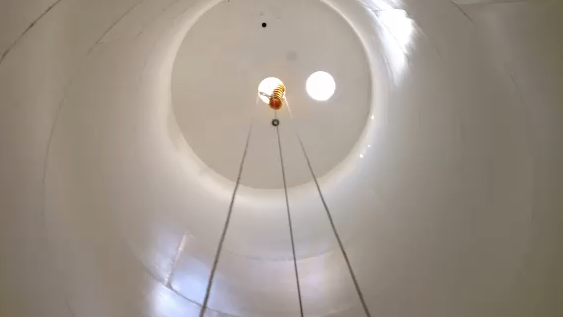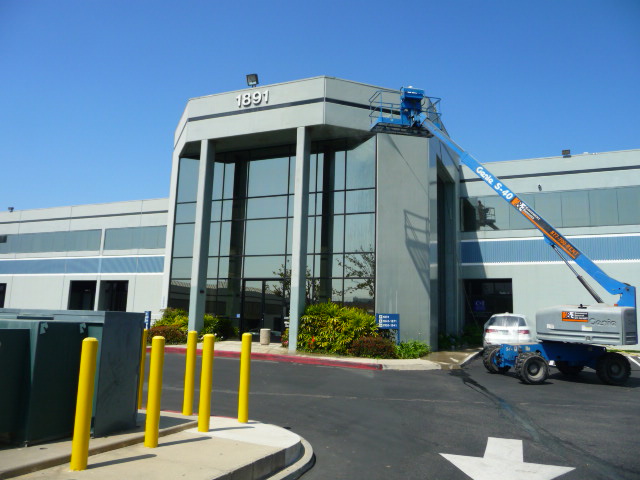Ensuring Safety Compliance on Industrial Painting Sites
A Guide by Kaz Painting Contractors, Inc
Industrial painting projects involve a myriad of tasks and challenges, not the least of which is ensuring safety compliance on the job site. At Kaz Painting Contractors, Inc., we understand the paramount importance of maintaining a safe working environment while delivering high-quality industrial painting services. In this article, we delve into the essential practices that guide our commitment to safety compliance on industrial painting sites.
Comprehensive Risk Assessment
Before embarking on any industrial painting project, a thorough risk assessment is essential. This involves identifying potential hazards, evaluating their likelihood of occurrence, and determining the potential impact on workers, equipment, and the environment. Kaz Painting Contractors, Inc. employs a meticulous risk assessment process to develop tailored safety protocols for each project, minimizing the chances of accidents and injuries.
Adherence to OSHA Standards
The Occupational Safety and Health Administration (OSHA) sets the benchmark for workplace safety in the United States. Our team at Kaz Painting Contractors, Inc. is well-versed in OSHA regulations pertaining to industrial painting sites. We ensure that our practices align with OSHA standards, including the use of proper personal protective equipment (PPE), safe handling of chemicals, and the implementation of fall protection measures.
Rigorous Training Programs
A competent and well-trained workforce is the backbone of safety on any industrial painting site. Kaz Painting Contractors, Inc. places a strong emphasis on continuous training for our personnel. From hazardous material handling to equipment operation and emergency response procedures, our employees are equipped with the knowledge and skills necessary to handle any situation safely.
Proper Equipment Maintenance
Faulty or poorly maintained equipment can significantly increase the risk of accidents on industrial painting sites. Regular maintenance and inspection of tools and machinery are integral parts of our safety protocol at Kaz Painting Contractors, Inc. By ensuring all equipment is in optimal working condition, we mitigate potential risks and uphold the safety of our team members.
Environmental Considerations
Industrial painting projects often involve the use of coatings, paints, and chemicals that could have adverse effects on the environment if not managed properly. At Kaz Painting Contractors, Inc., we prioritize environmentally friendly practices. This includes proper disposal of waste materials, adherence to EPA guidelines, and the use of eco-friendly paint products whenever possible.
Other environmental considerations can include:

By prioritizing environmental considerations, Kaz Painting Contractors, Inc. aims to protect both the natural environment and the communities we work in.
1. Air Quality Management: Painting processes can release volatile organic compounds (VOCs) and other airborne pollutants that contribute to air pollution and smog formation. To mitigate this, use low-VOC or zero-VOC paints and coatings. Additionally, consider implementing proper ventilation and air filtration systems to prevent the dispersion of harmful particles into the atmosphere.
2. Waste Management: Industrial painting generates waste materials such as used paint cans, brushes, and contaminated cleaning materials. Implement proper waste segregation, recycling, and disposal practices. Hazardous waste should be handled and disposed of according to regulations outlined by environmental agencies.
3. Spill Prevention and Cleanup: Accidental spills of paint, solvents, or other chemicals can have significant environmental impacts. Have spill response plans in place, along with spill kits and containment measures, to minimize the spread of pollutants and ensure quick and effective cleanup.
4. Water Pollution Prevention: Paints and coatings can contain chemicals that, if not properly managed, can contaminate water sources. Prevent runoff of paint, solvents, or cleaning agents into storm drains or natural water bodies. Implement containment measures such as berms and barriers to capture and divert potential pollutants.
5. Proper Surface Preparation: Effective surface preparation is key to ensuring paint adherence and durability. However, the removal of old coatings can generate dust and debris. Use techniques that minimize the generation of airborne particles, and implement containment measures to prevent the spread of contaminants.
6. Eco-Friendly Coating Selection: Choose paints and coatings that are designed to be environmentally friendly. Water-based paints, for instance, tend to have lower VOC content compared to solvent-based paints. Consider using coatings that are formulated to have minimal impact on the environment during both application and disposal.
7. End-of-Life Considerations: Anticipate the end of the painted product’s life cycle. Design coatings that are easily removable or that facilitate recycling. This can reduce the need for extensive paint stripping processes, which might generate more waste and require the use of harsh chemicals.
8. Erosion Control: Industrial painting sites may involve disturbances to soil and vegetation. Implement erosion control measures such as sediment barriers, stabilization techniques, and re-vegetation to prevent soil erosion and minimize the potential for sediment runoff into nearby water bodies.
9. Local Regulations and Permits: Different regions may have specific environmental regulations and permits for industrial painting projects. Ensure that you are in compliance with local laws, obtain necessary permits, and adhere to any special requirements for environmental protection.
Clear Communication
Effective communication is a linchpin of safety compliance on industrial painting sites. Our team promotes open lines of communication among all stakeholders, from project managers to on-site workers. Regular safety meetings, toolbox talks, and incident reporting mechanisms ensure that everyone remains informed about potential hazards and their mitigation.
Emergency Response Plans
Even with the best precautions, unforeseen emergencies can occur. Kaz Painting Contractors, Inc. takes a proactive approach by developing comprehensive emergency response plans for each project. These plans outline procedures for addressing incidents such as chemical spills, fires, and injuries. Regular drills and simulations help to ensure that our team can respond swiftly and effectively in crisis situations.
Industrial painting sites pose unique challenges that demand unwavering commitment to safety compliance. At Kaz Painting Contractors, Inc., our dedication to creating a safe working environment sets us apart. By conducting thorough risk assessments, adhering to industry regulations, fostering a well-trained workforce, and prioritizing clear communication, we ensure that every project is executed with the highest standards of safety in mind. When you choose Kaz Painting Contractors, Inc., you’re not only selecting top-notch industrial painting services but also a team that places safety above all else.
Read more about Commercial and Industrial Painting
Ensuring Safety Compliance on Industrial Painting Sites – A Guide by Kaz Painting Contractors, Inc.
Ensuring Safety Compliance on Industrial Painting Sites A Guide by Kaz Painting Contractors, Inc Industrial painting projects involve a myriad of…
Green Painting and the Cost-Saving Benefits
Green Painting and the Cost-Saving Benefits Sustainability is an increasingly vital concern for consumers and a topic building owners can’t ignore. Green…
Understanding the Role of Protective Coatings in Industrial Environments
In industrial environments, the application of protective coatings plays a crucial role in safeguarding equipment, infrastructure, and assets against various…



